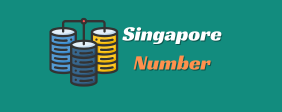Consider it’s Monday morning, russia phone number list
and you’re staring at your pipeline report. It’s a far cry from what it looked like three years ago. Buyers who once moved predictably through your funnel now take a winding, unpredictable journey across a maze of digital touchpoints. Sound familiar?
If it does, you’re in good company.
The B2B sales landscape has shifted so dramatically that even seasoned sales leaders are rethinking their strategies. But don’t worry—with change comes opportunity. Let’s explore the emerging pipeline generation trends that are reshaping how revenue teams can generate and optimize their pipelines in 2025.
Why Pipeline Generation Is More Critical Than Ever
Think back to a time when a strategies to boost engagement and conversions
polished sales deck and a confident handshake could seal the deal. Those simpler days are long gone. Today, buyers demand digital-first interactions, extensive research opportunities, and a seamless buying experience.
Consider these insights:
- Digital preference surge: McKinsey’s Digital B2B Pulse Survey found that 80% of B2B decision-makers now prefer digital engagement, a 32% jump from 2021.
- More informed buyers: Gartner reports that 72% of B2B buyers conduct in-depth research before contacting sales.
- Larger buying groups: SiriusDecisions highlights that the average buying group now includes 11 stakeholders.
These shifts have stretched sales cycles by 23% since 2023, according to Forrester’s State of B2B Revenue Report. To thrive in this environment, businesses must adapt their pipeline generation strategies. Here are five key pipeline generation trends to embrace.
AI-Powered Pipeline Optimization: The Revenue Accelerator
Artificial intelligence (AI) is no europe email
longer just a buzzword; it’s revolutionizing how businesses build and manage their sales pipelines. Companies are seeing measurable outcomes by using AI to optimize lead management, automate workflows, and personalize customer interactions.
Deloitte’s Tech Trends 2024 report reveals how AI is reshaping the B2B landscape:
- Lead quality improves by 37% because sales teams focus on higher-potential opportunities.
- Sales cycles shrink by 28% as AI-powered insights accelerate decision-making.
- 43% higher accuracy in predictive lead scoring
- 64% faster response times through automation
- 3.2x higher engagement rates with AI-driven content personalization
Imagine a B2B SaaS company that struggles with long sales cycles and inconsistent lead quality. By implementing an AI-powered platform like SalesIntel, Salesforce Einstein, or HubSpot’s AI tools, they:
- Use predictive lead scoring to identify the most promising prospects based on historical data and behavioral signals.
- Automate follow-up emails using chatbots and AI-driven workflows, ensuring leads are nurtured promptly without manual intervention.

